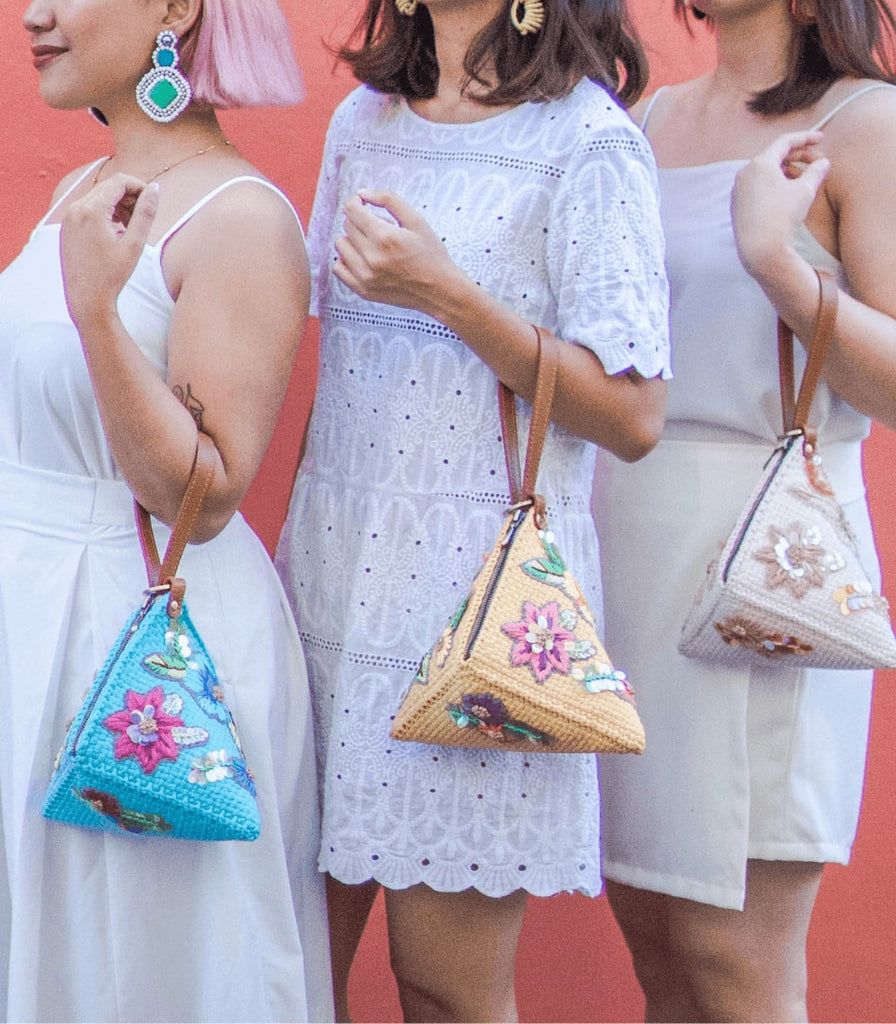“Tabi-tabi po, makikiraan lang po (Excuse me, just passing through).”
The first time I heard these words was at a family reunion at my Lolo’s house in the Philippines. A few of my mom’s uncles stood near a tree in the backyard and one of them casually slipped this phrase into the conversation.
Not to each other, like I’d expected, but to the tree.
When I asked why, they told me they didn’t want to upset the spirit who lived in or around the tree. At the time, as a newly returned balikbayan (repatriate), these were the kinds of rules I was learning for the first time.
To my surprise, this was a protocol followed by folks in all my social circles. I’ve heard elders, cousins, neighbors, and university classmates say “tabi-tabi po” like a reflex when they’re near anthills, termite mounds, gravestones, and big trees.
Why?
Because it’s better to be safe than sorry.
Nobody wants to accidentally anger the nuno sa punso (ancestor in the anthill) or a duwende (person of the ground).
We all know someone who knows someone who fell mysteriously ill because they were careless about these things. “Tabi-tabi po” is more of a precaution than a polite greeting.
What’s so interesting to me is, young or old, people still follow this little ritual.
Filipino Fashion's Hidden History
That was my first exposure to local mythology in the Philippines.
It’s easy to see how myths, legends, and superstitions influence our behavior; but, I wanted to take a look at its connections to something material. Say, contemporary Filipino fashion.
Designers and artisans have explicitly referenced our local lore in their creations before, like Miss Universe Philippines Catriona Gray’s gown. But this isn’t the first or the only time.
I believe objects collect a history through time. Sometimes it manifests physically the way well-loved jewelry can develop a patina and mended clothes gain character. There’s also a hidden history inherited from the materials used, or even the inspiration behind our items.
I wanted to dig deeper into the influence of Filipino legends in contemporary fashion, so let's take a look through the Cambio & Co. collections.
Philippine Myth Meets Material
In the ancient mythology of the Tagalog people, Bathala created life on Earth.
After two powerful gods died, Bathala witnessed a coconut tree sprout from where they were buried. He began to fill the world with his creation. Bathala built a house and fed the first man and woman with products of the coconut tree.
They discovered all the incredible things which could be made from every part of the coconut tree.

In the spirit of Bathala and the first people, Filipino jewelry brand Island Girl approached coconut inspired by its diverse uses as a material. They reused and upcycled coconut shells to create the Dreamweaver Coconut Necklace. Photo by Island Girl.
To our ancestors, what we now call myth explained many events we now explain through science. In pre-colonial Bicol, they believed in the lunar goddess Haliya and her archenemy, the sea serpent Bakunawa.
Bakunawa would fly into the sky and swallow the moon, plunging the world into darkness—a lunar eclipse. The Visayan people would bang their drums and perform rituals to implore Bakunawa to release the moon or call on Haliya for help.
The legend of Bakunawa varies on why the powerful creature was so drawn to the moon.
 The Valentina Capiz Earrings and Buwan Capiz Choker by Island Girl. Photo by Gerald Gloton.
The Valentina Capiz Earrings and Buwan Capiz Choker by Island Girl. Photo by Gerald Gloton.
One retelling claims Bakunawa was captivated by the moon’s beauty and wanted to possess it. Cambio & Co. partner Island Girl leaves our celestial moon where it hangs, and instead, uses shells from Bakunawa’s home—under the sea. They bring us the moon and its many lunar phases through the Buwan Capiz Choker and Valentina Capiz Earrings. Capiz shells give these pieces a pearlescent shine similar to the ethereal moon.
In other cases, it is us mortals who wreak havoc on the lives of the supernatural. Maria Makiling is a benevolent spirit (diwata), specifically a forest nymph (lambana), who lives on Mount Makiling in Laguna.
There are many stories about her. She gives freely to the people who live in the nearby villages. She was a spurned lover, she has turned ginger into gold, she protects her domain from earthquakes and storms.
In the myth where Maria Makiling’s heart is broken by a mortal man, the villagers are characterized to have abused her generosity. She withdrew from them, never to be seen again.
It’s believed that those caught stealing fruit from Maria Makiling would be trapped on the mountain until they prove they were innocent. One would have to turn their clothes inside out—this is a recurring superstition relating to the kapre (a giant) and the tikbalang (a horse creature) as well.
 Cambio & Co. partner AMAMI, in collaboration with Filipino artisans, carry on the traditions of pre-colonial Filipino goldsmiths (plateros). They take inspiration from their natural environment to craft pieces like the Parug-Parug Minimalist Gold Filigree Necklace. Photo by AMAMI.
Cambio & Co. partner AMAMI, in collaboration with Filipino artisans, carry on the traditions of pre-colonial Filipino goldsmiths (plateros). They take inspiration from their natural environment to craft pieces like the Parug-Parug Minimalist Gold Filigree Necklace. Photo by AMAMI.
The legends never explicitly mention what fruit the villagers would steal from Maria Makiling. But, we can imagine envious villagers eyeing the parug-parug (gac fruit) with its anti-aging properties for a taste of Maria’s immortal beauty.
Appeasing angered or mischievous spirits is never a light task.
For the sickly victims of a nuno sa punso, they need the help of an albularyo (folk healer). The remedy might also involve making an offering.
In Cebu, past rituals included: harang sa mga kalag (ritual preventing the deceased from affecting the living); damit (pre-harvest rites); buhat silang (thanksgiving post-harvest worship); and tigpo (ceremony for the atonement of sins), just to name a few.
 The pusô is a Filipino food offering of rice packed in woven palm leaves. Photo by whologwhy via Wikimedia Commons.
The pusô is a Filipino food offering of rice packed in woven palm leaves. Photo by whologwhy via Wikimedia Commons.
When the Spanish colonized the Philippines by sword and by cross, the pusô was adapted into Christianized rituals as well. These days, the pusô can be found as street food. No need to be a diwata!
 The Pusô Hardin by Rags2Riches shares the same shape as its edible counterpart, but upcycles overstock fabrics instead of palm leaves. What our ancestors cracked is that the pyramid shape makes a lot of room for sticky rice, or for your belongings! Photo by Rags2Riches.
The Pusô Hardin by Rags2Riches shares the same shape as its edible counterpart, but upcycles overstock fabrics instead of palm leaves. What our ancestors cracked is that the pyramid shape makes a lot of room for sticky rice, or for your belongings! Photo by Rags2Riches.
After learning the lore behind “tabi-tabi po” as a kid, I could never really look at anthills or balete trees the same way again.
Myths have a way of altering our perspective, adding a little bit of magic back into our lives.
And in the case of fashion, Filipino myths and legends also clearly influence what we wear, too.
Did you enjoy this article?
Subscribe to our newsletter to receive stories that explore the connection between Filipino fashion and culture. (Plus 10% off your first order of Filipino jewelry from Cambio & Co.) Sign up here.
Nicolette Bautista

Nicolette is a Manila-based creative freelancer and Cambio & Co's Community Storyteller. She's written on the digital space about mom-and-pop's, small businesses, and social enterprises. In the pursuit of her eclectic interests, Nicolette has a broad portfolio including short videos, album art, and storybook illustrations! Find her on Instagram @of_nicolette and ofnicolette.wordpress.com



Have you tried Lagim Card game? I want to recommend this Lagim Card game that my Family and I are enjoying. It’s amazing that they actually came up with the idea of Philippine Folklore since it’s kind of dying down a bit. It will surely educate future generation. You can visit their website for more info. The anatomy of the card is so amazing!
Leave a comment